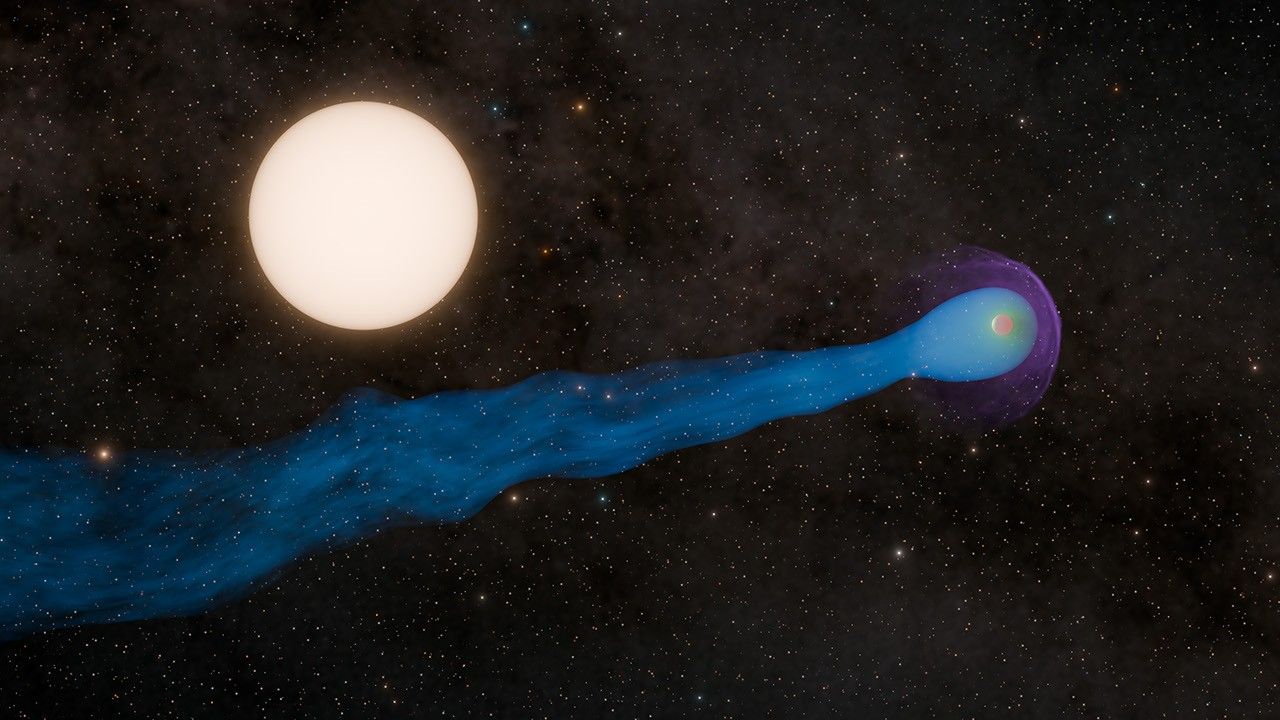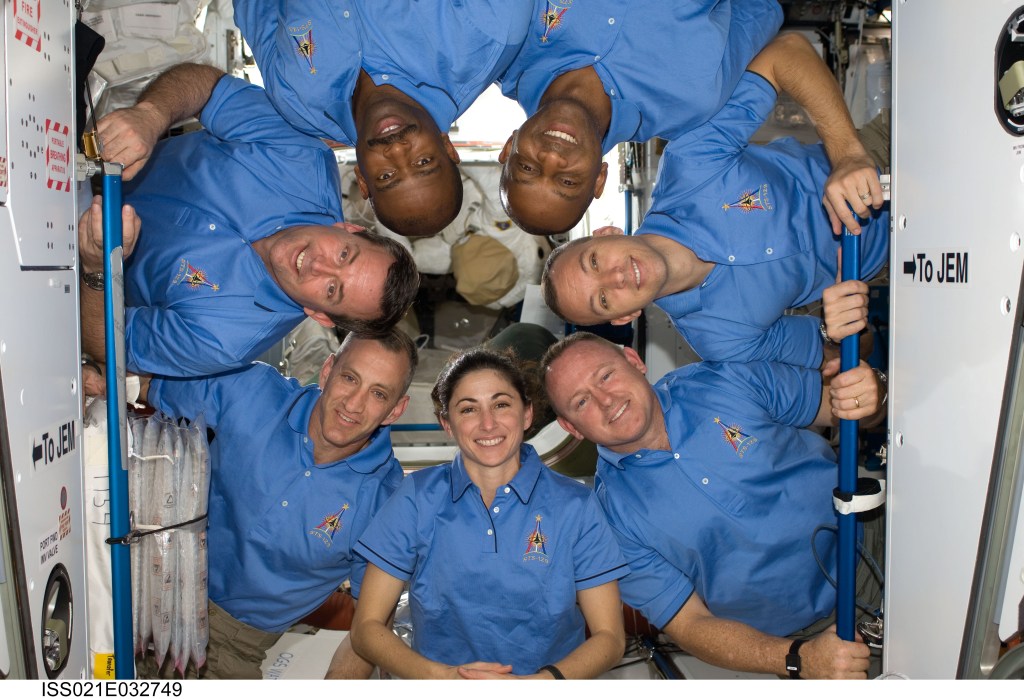
STS-66
Primary payloads were seven instruments on the Atmospheric Laboratory for Applications and Science-3 (ATLAS-3) and the Cryogenic Infrared Spectrometers and Telescopes for the Atmosphere-Shuttle Pallet Satellite (CRISTA-SPAS).
orbiter
mission duration
Launch
Landing

STS-66 Mission Facts
Mission: ATLAS-3; CRISTA-SPAS
Space Shuttle: Atlantis
Launch Pad: 39B
Launched: November 3, 1994, 11:59:43 a.m. EST
Landing Site: Edwards Air Force Base, Calif.
Landing: November 14, 1994, 7:33:45 a.m. PST
Runway: 22
Rollout Distance: 7,657 feet
Rollout Time: 49 seconds
Revolution: 174
Mission Duration: 10 days, 22 hours, 34 minutes, 2 seconds
Orbit Altitude: 164 nautical miles
Orbit Inclination: 57 degrees
Miles Traveled: 4.5 million
Crew
Donald R. McMonagle, Commander
Curtis L. Brown Jr., Pilot
Ellen Ochoa, Payload Commander
Scott E. Parazynski, Mission Specialist
Joseph R. Tanner, Mission Specialist
Jean-Francois Clervoy, Mission Specialist
Launch Highlights
Launch set for 11:56 a.m. was delayed slightly while shuttle managers assessed weather at the transoceanic abort landing sites. Liftoff was Atlantis’ first since an extended checkout and modification period at Rockwell plant in Palmdale (departed KSC October 1992 and returned May 1994). Orbiter returned to KSC outfitted with improved nosewheel steering, internal plumbing and electrical connections to accommodate an Extended Duration Orbiter pallet, and electrical wiring to enable OV-104 to be fitted with Orbiter Docking System for docking with Russian Space Station Mir.
Mission Highlights
STS-66 further advanced comprehensive effort to collect data about sun’s energy output, chemical makeup of the Earth’s middle atmosphere, and how these factors affect global ozone levels. Seven instruments on the Atmospheric Laboratory for Applications and Science-3 (ATLAS-3) also flew on first two ATLAS flights. No other collection of space-based instruments provides same extensive range of atmospheric measurements. Also considered a primary payload was the Cryogenic Infrared Spectrometers and Telescopes for the Atmosphere-Shuttle Pallet Satellite (CRISTA-SPAS), continuing joint NASA-German Space Agency (DARA) series of scientific missions. ATLAS-3 and CRISTA-SPAS considered as joint mission with single set of science objectives. During mission, crew divided into two teams for around-the-clock research.
ATLAS-3 instruments, mounted on a Spacelab pallet in cargo bay, included Atmospheric Trace Molecule Spectroscopy (ATMOS), which collected more data on trace gases in the atmosphere than on all three of its previous flights combined; Shuttle Solar Backscatter Ultraviolet Spectrometer (SSBUV), which took ozone measurements to calibrate ozone monitor on aging NOAA-9 satellite as well as cooperative measurements with other ATLAS-3 instruments; Active Cavity Radiometer Irradiance Monitor (ACRIM), which took extremely precise measurements of the sun’s total radiation for 30 orbits as calibration reference for sister instrument on Upper Atmosphere Research Satellite (UARS) launched in 1991; Measurement of the Solar Constant (SOLCON), provided by Belgium, which also measured solar radiation but as reference point to track changes over years; Solar Spectrum Measurement (SOLSPEC), French instrument, measured sun’s radiation as function of wavelength; and Solar Ultraviolet Spectral Irradiance Monitor (SUSIM), which collected its highest precision solar ultraviolet radiation measurements in its 15-year lifetime. Millimeter Wave Atmospheric Sounder (MAS), collected nine hours of observations, measuring distribution of water vapor, chlorine monoxide and ozone at altitudes between 12 and 60 miles (20-100 kilometers), before computer malfunction halted instrument operations.
CRISTA-SPAS released from orbiter’s Remote Manipulator System arm on second day of mission. Flying at distance of about 25-44 miles (40-70 kilometers) behind the shuttle, payload collected data for more than eight days before being retrieved and returned to cargo bay. CRISTA instrument gathered first global information about medium- and small- scale disturbances in trace gases in middle atmosphere, which could lead to better models of the atmosphere and Earth’s energy balance. Second CRISTA-SPAS instrument, the Middle Atmosphere High Resolution Spectrograph Investigation (MAHRSI) measured amounts of ozone-destroying hydroxyl and nitric oxide in the middle atmosphere and lower thermosphere from 24-72 miles (40-120 kilometers). MAHRSI yielded first complete global maps of hydroxyl in atmosphere.
For retrieval of CRISTA-SPAS, different approach method to spacecraft was successfully tested as prelude to upcoming U.S. Shuttle/Russian Space Station Mir docking flights. Called R-Bar approach, it is expected to save propellant while reducing risk of contamination to Mir systems from orbiter thruster jet firings.
STS-66, the ATLAS-3 Mission to Study Earth’s Atmosphere
On Nov. 3, 1994, space shuttle Atlantis took to the skies on its 13th trip into space. During the 11-day…
Read the Story
STS-66
Shuttle News
Retired Space Shuttle Locations
Shuttle Atlantis – Kennedy Space Center Visitor Complex Shuttle Discovery – Steven F. Udvar-Hazy Center Shuttle Endeavour – California Science…
Read the Story











































